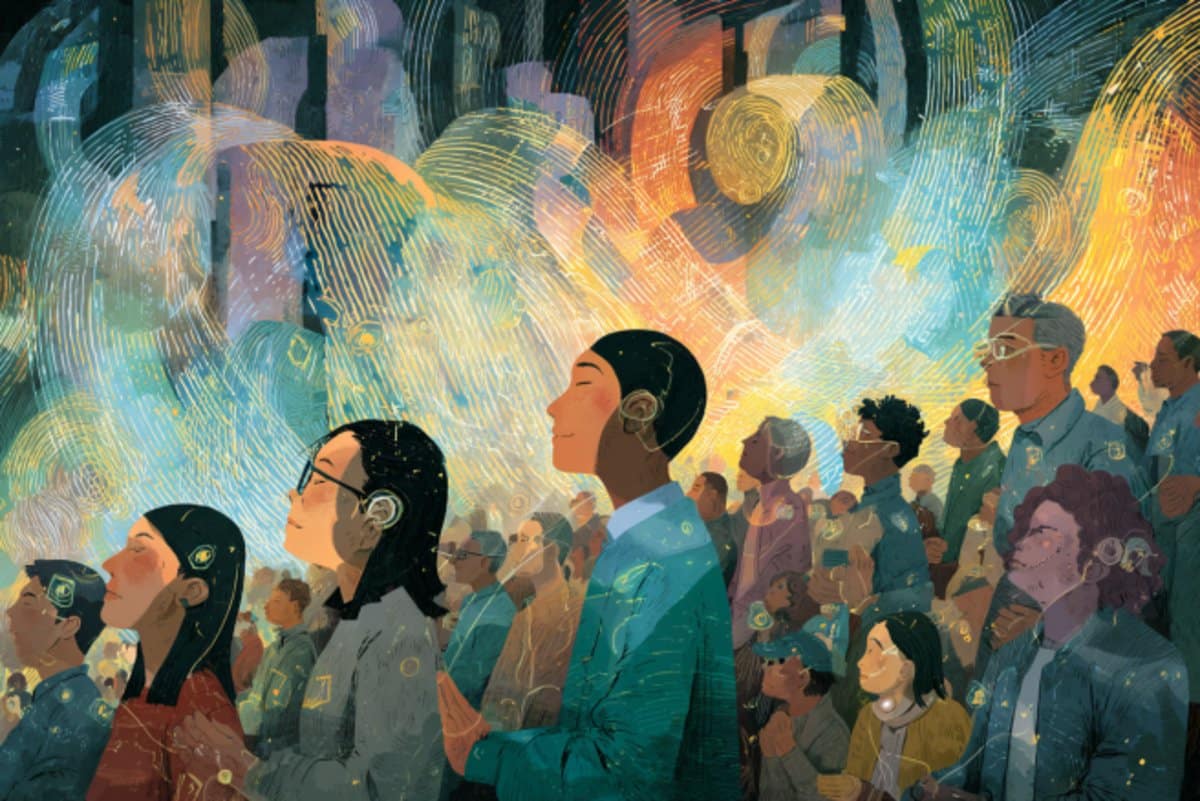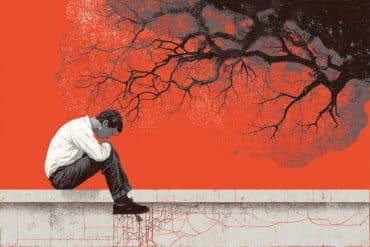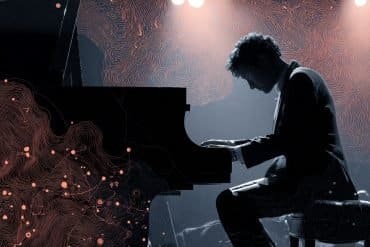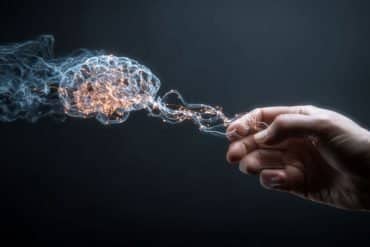Summary: Aesthetic chills—goosebumps from music or art—are not just fleeting sensations but windows into human psychology. A large-scale study of over 8,000 people revealed that chills are tied to insight, self-transcendence, and even political leanings.
Conservatives reported stronger chills overall, but deeper analysis uncovered a U-shaped effect: people at both political extremes, left and right, reported the most intense aesthetic responses. These findings suggest that bodily awareness and visceral experiences may fuel political intensity, offering a new perspective on polarization.
Key Facts:
- Conservatives & Chills: Conservatives initially showed stronger chills responses compared to moderates.
- U-Shaped Effect: Extremes on both left and right reported the most intense chills, supporting “horseshoe theory.”
- Interoception Link: Heightened bodily awareness (interoceptive sensitivity) may underpin political extremism and strong emotional experiences.
Source: Institute for Advanced Consciousness Studies
When Leonard Cohen’s “Hallelujah,” sung by Rufus Wainwright and 1,000 audience members, fills a room, over two-thirds of listeners experience an unmistakable physiological response: goosebumps grow on their arms, and the chill of deep joy and pleasure radiates up and down the spine, often transporting them, briefly, to a timeless space of resolution, connection, and sometimes compassion.
These aesthetic chills are increasingly fascinating researchers as a marker of peak experience, and a potential microcosm for the very study of transformative experience itself. A surprising new study from our lab reveals that they may serve as windows into our political psychology.
In studies of over 8,000 participants online, we and colleagues found that aesthetic chills are robustly tied to classical elements of mystical experience, such as psychological insight, emotional breakthrough, and self-transcendence.
However, in studying this question, we came upon a scientist’s favorite thing: an unexpected finding. While careers and impactful papers are built on the confirmation of carefully constructed hypotheses, an unexpected result is what gives researchers goosebumps! A strong finding in search of a model—incontrovertible, but defying understanding.
Indeed, in this case, the result was perhaps even naughty, or polemic:
Across thousands of people of every age, race, sex, and creed, one linear (more X, more Y) relationship seemed to hold strong: the more politically conservative people were, the more intense they reported their aesthetic chills to be.
In our first round of papers from this dataset, this was a secondary finding that we approached with some neutrality.
After all, there are a lot of ways to approach this finding: Are conservatives more aesthetically oriented? Are more aesthetically oriented people more viscerally guided?
Are conservatives more deeply moved by things, while liberals are detached? Is there something to the theorized relationship between authoritarianism’s roots and the aesthetic lens? What about left-wing authoritarianism? Is this universal?
In this study, we examined a few of them. Most carefully, our hypotheses were: First, was this simply the result of conservatives in California being a political minority, and hence more prone to anti-establishment, charismatic feelings—just as progressives might be in a context of conservative hegemony?
Second, could this be explained by a strong and historically situated correlation between American conservatism and religiosity?
Third, how much of this could be explained by variation in what is called interoceptive awareness—people’s varying degrees of acquaintance and relationship with their internal sensations, what others might term their gut feelings?
To probe all of these questions, we conducted an additional study in 900 participants between California and Texas—both diverse politically, racially, economically, yet both American states, and yet in one case progressive, in the other conservative hegemonically.
Before driving to the findings, a brief aside on these related questions:
Smith et al. (2011) showed that conservatives have heightened sensitivity to disgust and stronger neurophysiological reactions to threatening or negative stimuli, building on findings by Oxley et al. (2008) showing that conservatives have higher skin conductance responses to sudden noises and threatening images.
Tybur et al. (2010) found that conservatives have heightened sensitivity to contamination and pathogen threats, which may underlie their concerns about moral purity.
This may underlie work by Jonathan Haidt and colleagues on moral foundations theory, suggesting that greater sensitivity to disgust explains their emphasis on sanctity and degradation as moral concerns (Graham et al., 2009).
Xu et al. (2020) found that trait orderliness explains the link between disgust sensitivity and political conservatism, suggesting that embodied experiences of disorder activate conservative political responses.
Crawford et al. (2013) found that even implicit disgust responses using facial EMG correlate with conservative attitudes.
Jost et al. (2003) proposed that conservatism stems from managing uncertainty and threat, and Amodio et al. (2007) found that conservatives show reduced anterior cingulate cortex activity during conflict monitoring.
Hibbing et al. (2014) argued that conservatives are more sensitive to negative stimuli generally.
Interestingly, Garfinkel et al. (2016) found that conservatives may have enhanced interoceptive sensitivity, potentially explaining their greater gut feeling reliance in moral judgments, perhaps relating to some more problematic and less replicable genetic or neuroanatomical differences between political conservatives and liberals.
It may seem like we are circling around a tidy little narrative around conservatism and emotionality, but as our contemporary political reorientation and questioning of axes appropriately suggests, our results point towards a need for more complexity, not less.
While we did replicate the correlation with conservatism and found a strong relationship with religiosity, the relationship between political orientation, visceral interoceptive awareness, and chills intensity revealed the limits of our models.
A closer look at the relationships showed a U-shaped relationship between political orientation and chills intensity, and interoceptive awareness, suggesting something that proponents of the dual-axis theory of political orientation have been arguing for decades: that political orientation is not simply a left-to-right issue, but one of both economic and social attitudes.
When we re-analyzed the data to examine people’s distance from the political center, we found a very strong relationship between political extremism and both interoceptive awareness and intensity of aesthetic response, suggesting that while religiosity may play a role, the intensity of aesthetic, gut responses may underlie extreme political views both in the liberal and conservative camps.
The horseshoe theory—that extremes from both camps resemble each other more than moderates—seems to be reflected here in the neuroscience of mystical experience.
What does this mean?
Well, it suggests that the further people stray, the weirder are the tools necessary to bring them back; that extremes may find common cause and speak each other’s language; that we may have to use a combination of narrative and somatic tools to create consensus or bridge political polarization; and that engendering complexity may be necessary for a pluralistic society.
Importantly, this whole study is a meta-lesson in attending to the sources of awe and wonder, and what lies beyond, rather than what lies within, conventional thinking.
About this musical chills and political neuroscience research news
Author: Leonardo Christov-Moore
Source: Institute for Advanced Consciousness Studies
Contact: Leonardo Christov-Moore – Institute for Advanced Consciousness Studies
Image: The image is credited to Neuroscience News
Original Research: Open access.
“Individual differences in aesthetic experience point to the role of bodily awareness in political orientation” by Leonardo Christov-Moore et al. Political Psychology
Abstract
Individual differences in aesthetic experience point to the role of bodily awareness in political orientation
Aesthetic chills are a peak response characterized by shivers and goosebumps in response to stimuli such as music or speech.
In a previous study of 2947 California participants, conservatives and liberals reported experiencing chills with similar frequency when exposed to prevalidated audiovisual stimuli, but conservatism was associated with more intense chills.
The present preregistered study examines whether this correlation was due to religiosity and/or being among a cultural minority (conservative within a progressive context), by assaying matched politically diverse populations in California (n = 620) and Texas (n = 262) while testing for religiosity and interoceptive awareness, based on links between conservatism and disgust sensitivity.
The originally observed positive correlation between chills intensity and conservatism was replicated, did not show an effect of location, and appears strongly mediated by trait absorption, religiosity, and prestimulus mood.
Post hoc analyses of nonlinear trends suggested that interoceptive awareness and chills intensity covary with distance from the political center, that is, extremism, rather than conservatism per se.
This work suggests that heightened physiological/visceral intensity of experience may partly underlie political extremism and supports the utility of aesthetic responses as a tool to identify and even alter belief structures, including those underlying political world views.







